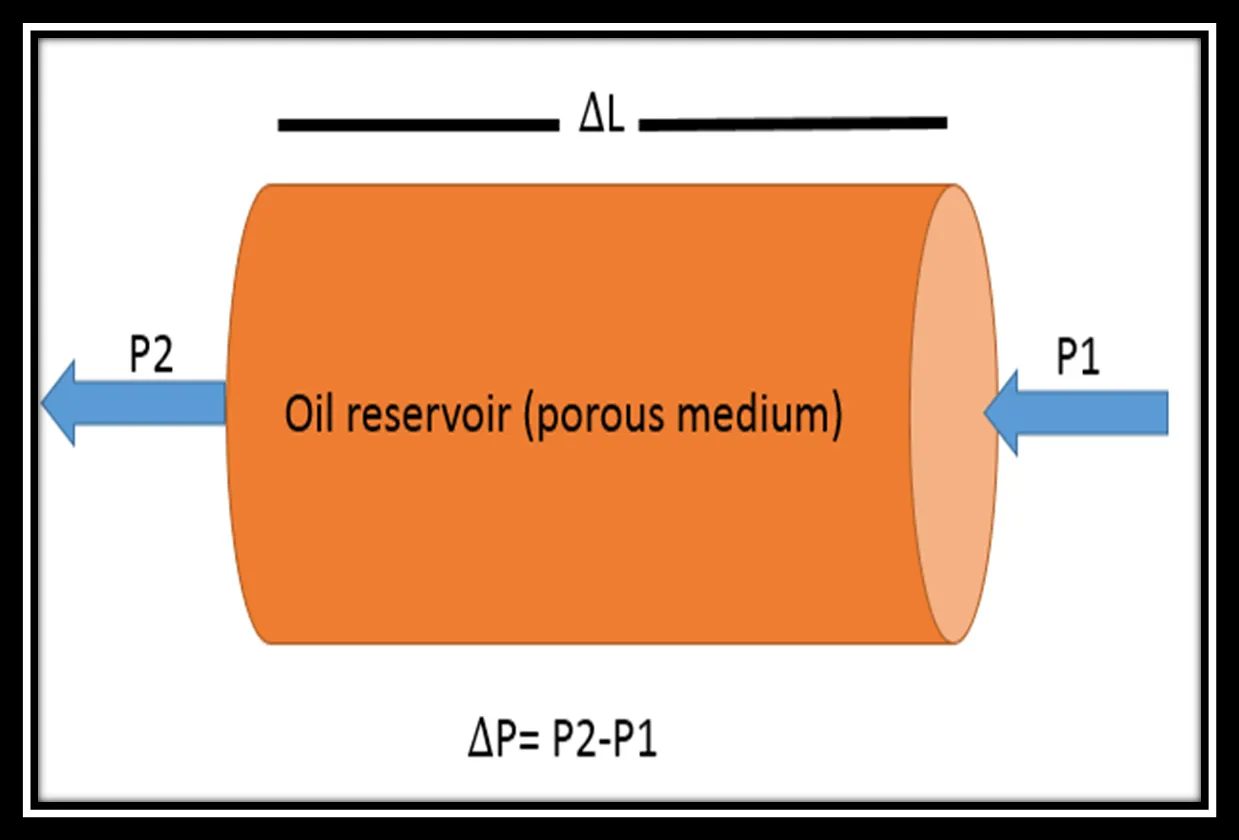
There are multiple physical properties that when studied and evaluated provide us with a sense of understanding of how processes occur within engineering, for this case I want to explain some basic aspects about the influence that permeability has on how oil is produced from an oil field.
It is important to mention that there are several academic disciplines that provide us with the necessary knowledge to be able to give an approach from petroleum engineering to permeability, an example of this is fluid mechanics, because although permeability depends on a porous medium (storage rock) also influence characteristics such as flow velocity, fluid pressure before the rock, fluid viscosity, which are studied with fluid mechanics.
But really, how could permeability be defined in a clear and simple way?
Permeability is a physical property of a fluid, therefore it can be measured, what it really measures is the ability that fluids have to flow through a system to another.
In the case of an oil reservoir (storage rock) it is the system where the oil is contained under specific conditions, therefore the facility that the oil has to flow from the reservoir to the oil well, where the oil well is the other system. This facility to flow is what is called permeability of the oil porous system.
Why is permeability linked to rock porosity?
Porosity is the interconnected space between the rocks that make up the oil reservoir, therefore if the pore space is large, it facilitates the flow of oil, therefore the permeability will increase, if the pore space is reduced, then the permeability will be low, All this leads us to conclude that permeability will depend directly on the porosity of the rock, since the pore space is where the oil will pass through in its migration process and its fluidity will depend on how large the pore spaces of the reservoir rock are.
In the subsurface there is a chain of variable dependencies, since permeability depends on porosity, but in turn porosity will also depend on the way in which the rocks are continuously deformed, especially if it is in a fault zone, including the form of connectivity of the pores of the rocks will also depend on the dynamism of the lithological deformation of the rock.
We cannot leave aside the influence of the pressure at which the oil is stored in the oil reservoir (pore pressure), therefore in the equation used to calculate the permeability it is important to take into account the degree of influence on the permeability of the pore pressure of the storage rock.
In what units can the permeability of oil-producing rock be measured?
In units of the international measurement system, permeability can be measured in square meters, but in the oil industry as such, permeability is usually measured in darcy, in honor of Henry Darcy, who was the precursor of Darcy's law to evaluate the fluid flow through a porous medium.
What applications does permeability have in petroleum engineering?
When oil permeability is calculated taking into account the porous medium of the producing reservoir, such calculation can provide guidance to petroleum engineers in order to determine the oil flow characteristics of a particular oil reservoir.
It is not profitable to exploit an oil reservoir if its permeability is very low, since then, such oil reservoir will have to produce oil by some additional production mechanism, which will increase production costs, therefore perhaps it would only be profitable to produce only if oil prices are high.
If the idea is to produce an oil field that does not require any additional production mechanism or any other stimulation, then we calculate the permeability of the producing oil field and it will only be viable if the permeability is above 100 milli darcy.
Description and evaluation of Darcy's law to calculate the permeability of an oil reservoir.
Permeability is a calculation that depends on the discharge ratio (flow rate) and the physical properties of the oil with a pressure gradient applied to the porous medium, which in this case is the oil reservoir. This translates into the following equation:

En dónde:
k: es la permeabilidad del medio poroso.
v: es la velocidad del petróleo.
n: es la viscosidad dinámica.
∆𝑥: es el espesor del yacimiento petrolero.
∆P: es la diferencia de presión.
Si embargo, si queremos saber el aporte del yacimiento como medio poroso en términos de caudal, podemos emplear la siguiente ecuación:

En dónde:
qo = Caudal de petróleo.
k = Permeabilidad del yacimiento.
A = Área de la sección transversal del yacimiento.
∆P: es la diferencia de presión.
n: es la viscosidad dinámica.
∆𝐿: Longitud de anchura del yacimiento como medio poroso.

Conclusión
Conocer al aporte que va a tener un yacimiento petrolero en forma de caudal volumétrico es un factor clave para evaluar la factibilidad en la producción de petróleo en el yacimiento, para ello es importante el cálculo de la permeabilidad del medio poroso, para este caso es el yacimiento productor. Es por ello que resulta importante conocer las dimensiones físicas del yacimiento productor, y también resulta importante conocer las propiedades físicas del petróleo que pretendemos producir, tal como viscosidad dinámica, velocidad de flujo, entre otros más.
References
Bense, V.F.; Gleeson, T.; Loveless, S.E.; Bour, O.; Scibek, J. (2013).
Guerriero V, et al. (2012). "A permeability model for naturally fractured carbonate reservoirs".